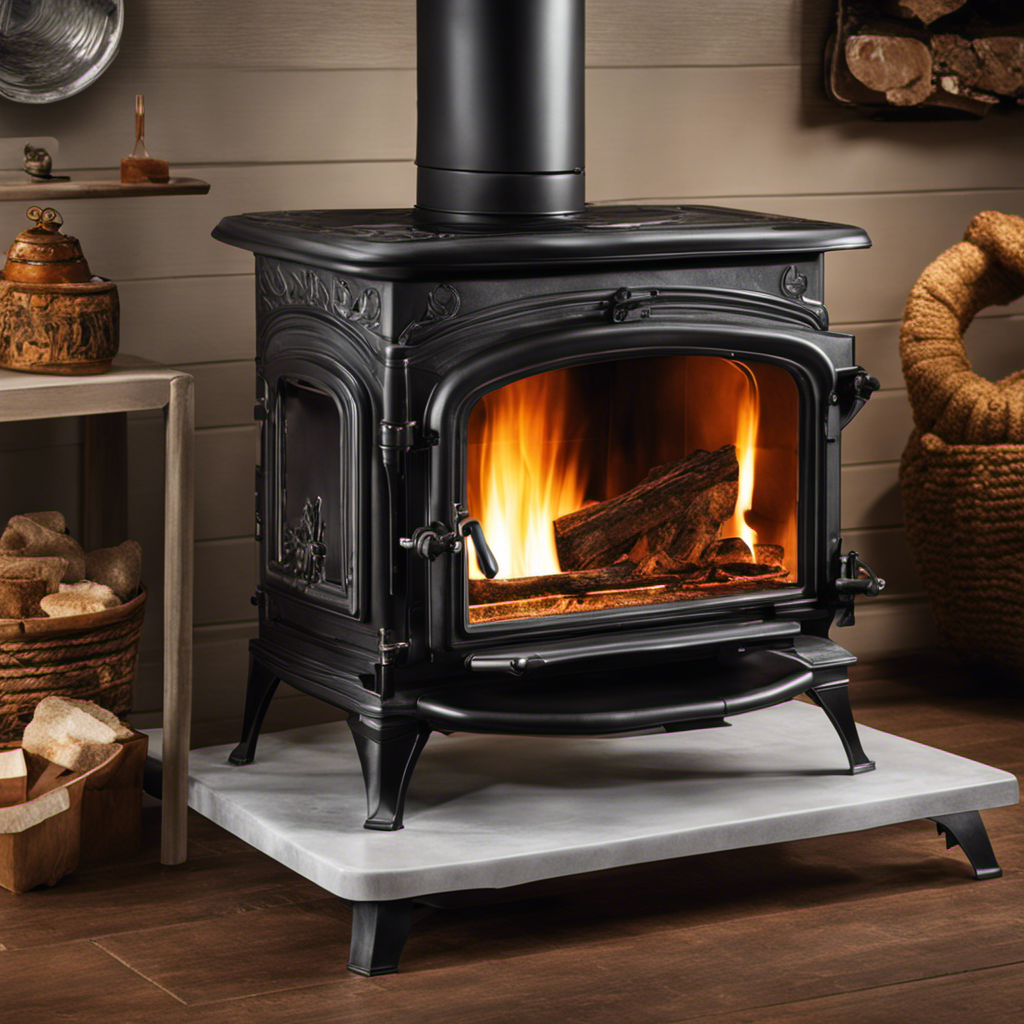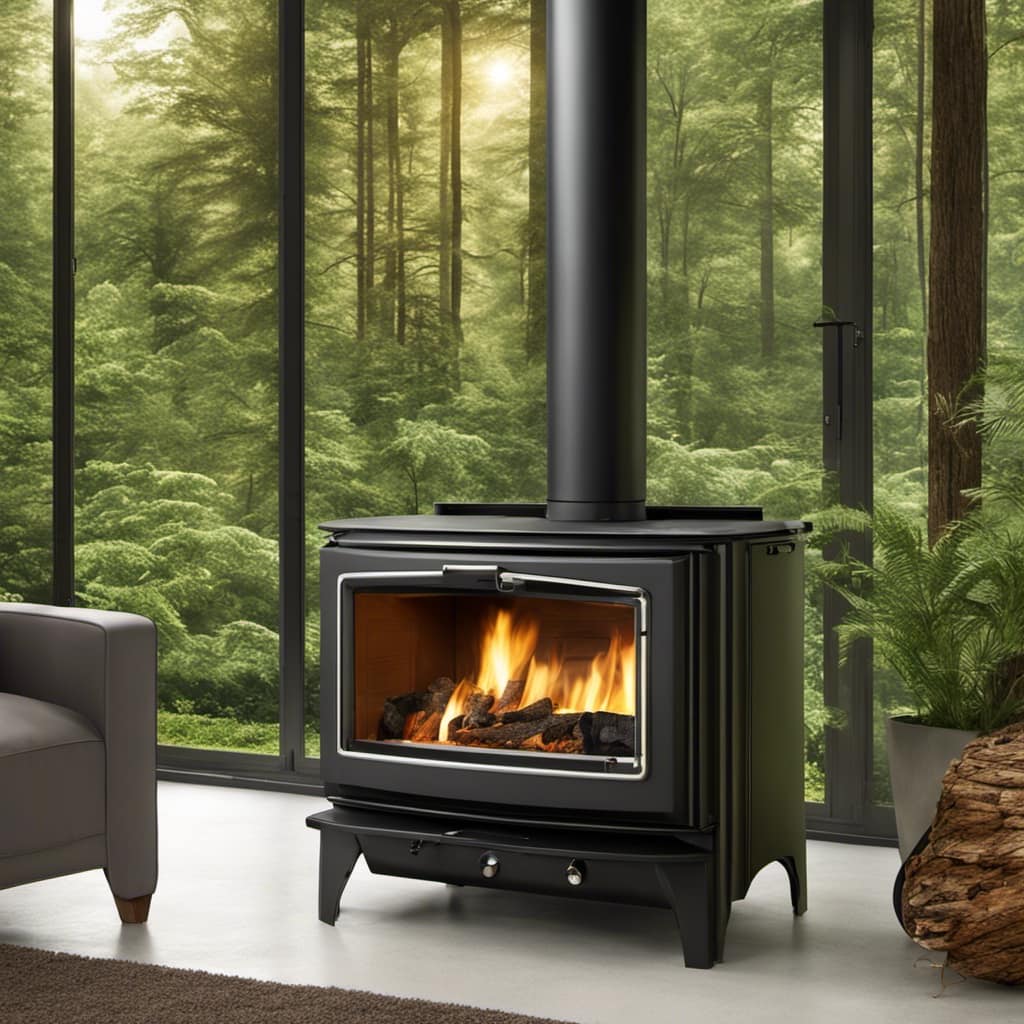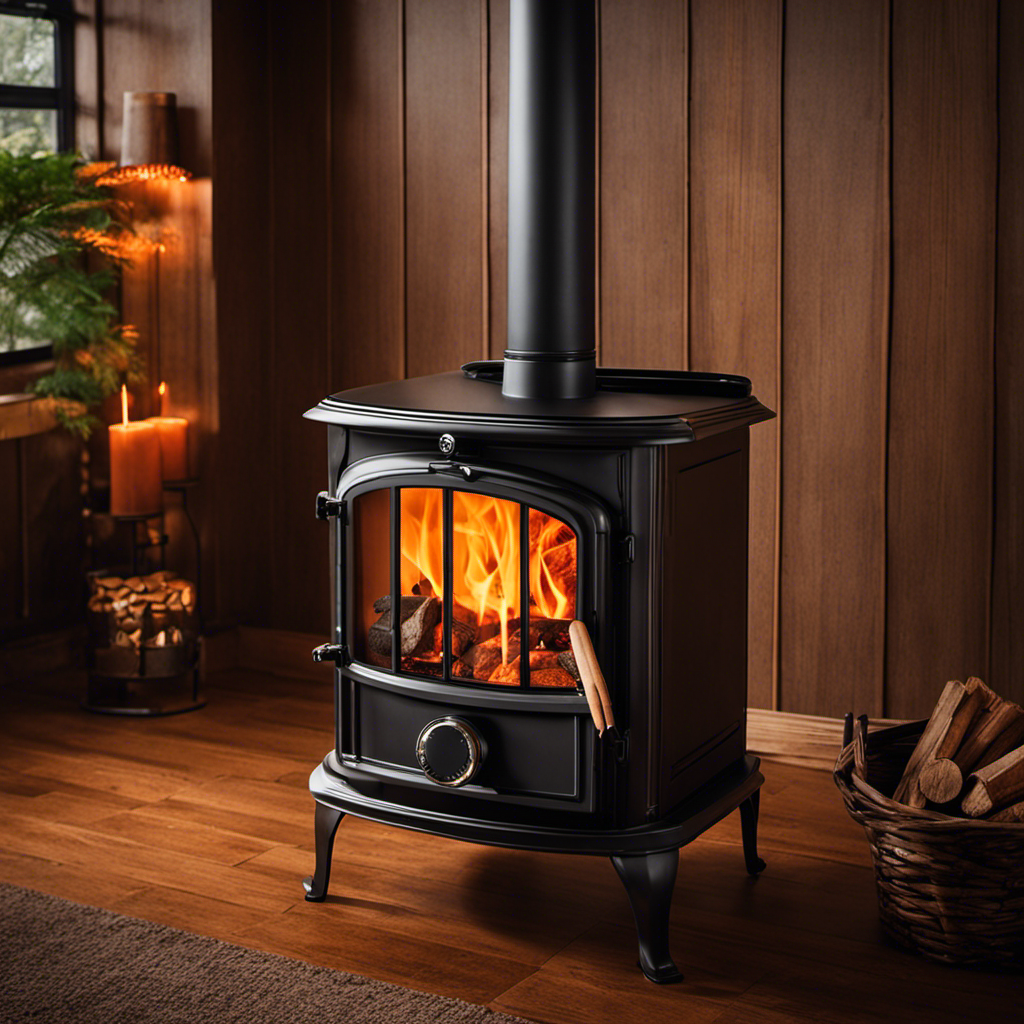A famous saying goes, ‘An ounce of prevention is better than a pound of cure.’ This holds especially true for your cast iron wood stove, where making sure it’s adequately sealed is the key to preventing leaks and improving its efficiency in operation.
In this article, I’ll share my knowledge and experience on how to seal a cast iron wood stove. From gathering the necessary tools to applying the sealant, I’ll guide you through the process step by step.
Get ready to keep your wood stove in tip-top shape!
Key Takeaways
- Sealing your cast iron wood stove prevents heat loss and improves efficiency.
- Regular maintenance, including sealing, extends the lifespan of the stove.
- A well-sealed stove keeps the room warm for longer periods of time.
- Choosing the right sealant, ensuring proper ventilation, and regularly monitoring and maintaining the seals are important for stove efficiency and safety.
Understanding the Importance of Sealing Your Cast Iron Wood Stove
I recently learned about the importance of sealing my cast iron wood stove to prevent heat loss and improve its efficiency. Regular maintenance is crucial for keeping the stove in optimal condition.
By properly sealing the stove, you can ensure that it functions at its best and provides maximum heat output. One of the benefits of regular maintenance is that it extends the lifespan of the stove, saving you money in the long run. Additionally, a well-sealed stove will prevent the escape of heat, which means your room will stay warm for longer periods. However, it’s important to avoid common mistakes such as using the wrong type of sealant or neglecting to clean the stove before sealing.
Now that we understand the importance of sealing, let’s discuss gathering the necessary tools and materials for the process.
Gathering the Necessary Tools and Materials for Sealing
To properly seal the cast iron wood stove, you’ll need a high-quality sealant and a clean, dry surface. Choosing the right sealant is crucial for ensuring a long-lasting and effective seal. Look for a sealant specifically designed for high heat applications and one that can withstand the extreme temperatures of the wood stove.
Additionally, proper ventilation during the sealing process is essential to prevent the buildup of harmful fumes. Make sure to open windows and doors or use fans to maintain good airflow while sealing the stove. By taking these precautions, you can ensure a safe and successful sealing process.
Now that we’ve discussed the importance of choosing the right sealant and ensuring proper ventilation, let’s move on to preparing your cast iron wood stove for sealing.
Preparing Your Cast Iron Wood Stove for Sealing
Before sealing, ensure that all surfaces of your cast iron wood stove are thoroughly cleaned and dried, as this will help the sealant adhere properly and effectively. Cleaning the stove is an essential step in the sealing process, as it removes any dirt, grime, or previous sealant residue that could interfere with the new sealant’s performance. Here are some tips to ensure a successful cleaning process:
- Use a wire brush or scraper to remove any loose debris or rust from the stove.
- Wipe down the surfaces with a damp cloth or sponge to remove any remaining dirt or grease.
- Allow the stove to air dry completely before applying the sealant.
- Avoid using harsh chemicals or abrasive cleaners, as they can damage the cast iron surface.
By following these cleaning steps, you’ll create a clean and smooth surface for the sealant to adhere to, ensuring a long-lasting and effective seal.
If you encounter any common sealant issues, such as cracking or peeling, troubleshooting should involve re-cleaning the surface and properly applying a new layer of sealant.
Applying the Sealant to Your Cast Iron Wood Stove
After cleaning and drying the surfaces of my cast iron wood stove, I carefully apply the sealant to ensure a proper and effective seal. Wood stove maintenance is crucial to ensure its longevity and efficiency. Sealing the stove is an essential step in this process.
When it comes to sealing techniques, there are a few key considerations to keep in mind. Firstly, choosing the right sealant is important. High-temperature silicone sealants are commonly used for cast iron stoves as they can withstand the extreme heat.
Secondly, it’s crucial to clean and dry the surfaces thoroughly before applying the sealant. Any dirt or moisture can hinder the effectiveness of the seal.
Lastly, applying the sealant evenly and in a thin layer is crucial for a proper seal. A well-sealed cast iron wood stove not only ensures efficient heat output but also prevents any potential leaks or damage.
Maintaining and Monitoring the Seals on Your Cast Iron Wood Stove
I regularly check the seals on my cast iron wood stove to ensure they’re intact and functioning properly. Monitoring the seals is crucial for maintaining the efficiency and safety of the stove. Here are some key points to consider when monitoring and troubleshooting seal issues:
-
Visual Inspection: Regularly examine the seals for any signs of wear, such as cracks or gaps. This can help identify potential problems before they escalate.
-
Smoke Test: Conduct a smoke test to check the integrity of the seals. Close all the dampers and vents, then light a small piece of paper inside the stove. If smoke escapes from anywhere other than the chimney, it indicates a seal problem.
-
Gasket Replacement: If you notice damaged or deteriorated gaskets, replace them promptly. This will ensure a tight seal and prevent heat loss.
-
Proper Cleaning: Clean the seals regularly to remove any debris or buildup that may interfere with their performance.
Frequently Asked Questions
Can I Use Any Type of Sealant on My Cast Iron Wood Stove?
I wouldn’t recommend using just any type of sealant on a cast iron wood stove. There are different types of sealants available, each with their own pros and cons. It’s important to choose the right one for your stove.
How Often Should I Reapply the Sealant to My Cast Iron Wood Stove?
I recommend reapplying the sealant to your cast iron wood stove every 1-2 years. It’s important to let the sealant dry fully before using the stove again to ensure proper protection and longevity.
Is It Necessary to Seal Both the Inside and Outside of the Stove?
Sealing both the inside and outside of a cast iron wood stove is necessary. It helps prevent heat loss and protects the stove from rust and corrosion. I recommend using high-temperature silicone sealant for the best results.
Can I Use a Regular Paintbrush to Apply the Sealant?
Yes, you can use a regular paintbrush to apply sealant on a cast iron wood stove. However, there are alternative methods such as using a foam brush or a high-quality paint sprayer for a smoother finish.
Can I Still Use My Wood Stove While the Sealant Is Drying?
Yes, you can use your wood stove while the sealant is drying. However, it is recommended to use alternative sealant options that allow for immediate use of the stove without compromising the sealing process.
Conclusion
After sealing your cast iron wood stove, you can enjoy the benefits of a more efficient and reliable heating source. The sealant not only helps prevent leaks and drafts, but it also enhances the overall performance of your stove.
With proper maintenance and monitoring, you can ensure that your seals remain intact and continue to provide optimal heating for years to come.
So, seal your wood stove and experience the warmth and coziness it brings to your home.











